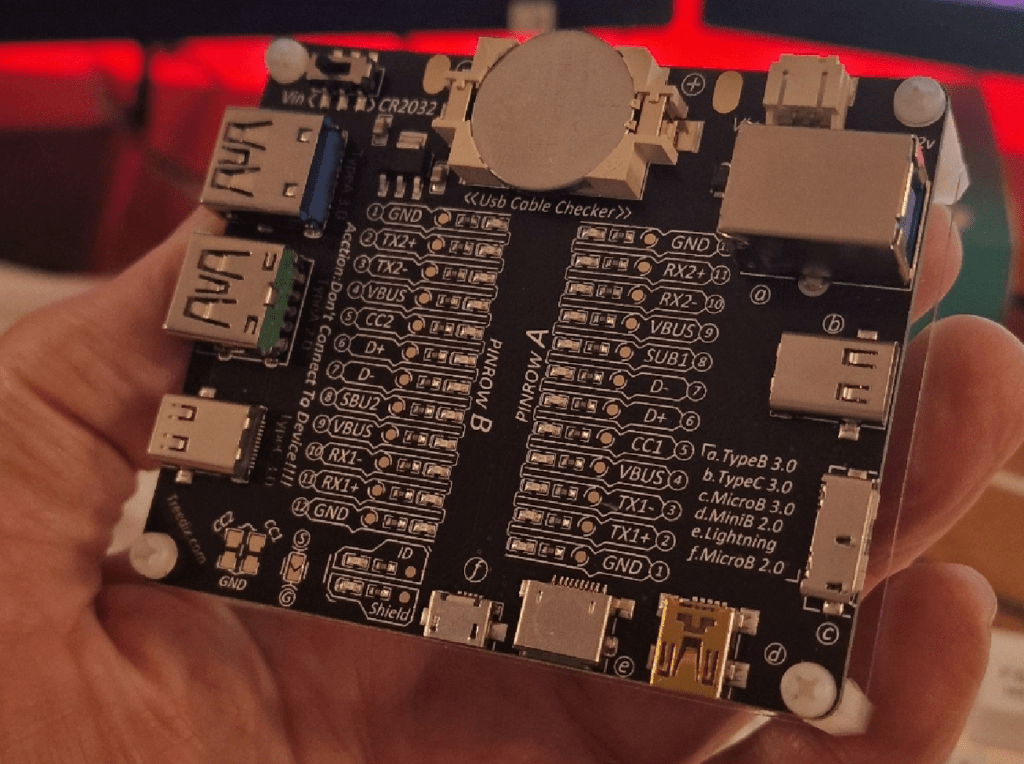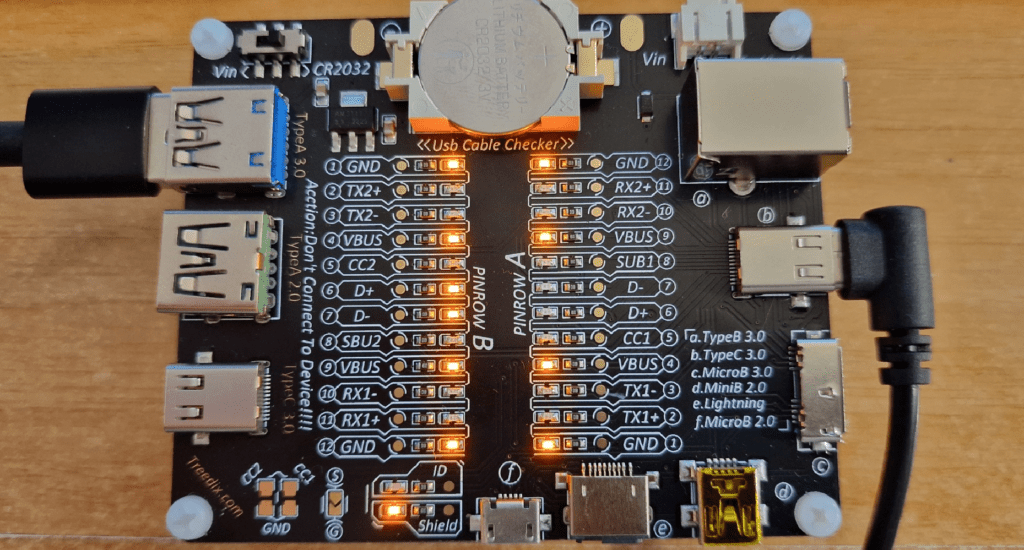Like many of you, I have countless USB leads of various types – and more and more USB-C leads (USB-A at one end, USB-C at the other – or USB-C at both ends). This is not new but I’ve been getting increasingly annoyed with two things: (a) discovering – despite using a fast charger on my Samsung S22 Ultra phone (i.e. variable voltage, so voltage drops in the lead should not be a issue) that some combinations of lead and charger won’t fast charge – I’m heading towards blaming mainly the leads. USB leads which won’t transfer data or won’t transfer data at high speed looks set to be all part of the same problem . I’m seeing no correlation between lead thickness and these issues.
We have standards for everything in this world – why can we have, say GREEN leads which are good for fast charging rates and orange for those able to transfer data at the highest speeds – well, you get the idea – I’m always testing leads but I guess millions would not know where to start – and now I’m realising I’ve been missing a testing trick or two – read on…
USB-C uses more wires than older USB versions ( data lines previously) – see Andreas Spiess video featured in the comment below which goes into great depth on the subject.
USB-C is not only the newest standard but it seems that the EU are looking to push Apple in that direction away from “lightning connectors”. Personally I’ve no problem with USB-C other than the variation in the leads. As you’ll see in the comments – help is at hand.
Importantly, USB-C connectors are bi-directional. It is also possible for in the case of chargers, for the charger to provide higher than 5v to compatible with receiving devices getting 9v, 12v or higher thanks to data sent to indicate compatibility. I have several chargers which have USB-3 4-pin connections (2 power, 2 data) which, when connected to for example my Samsung S22 Ultra phone which has USB-C at the other end, can provide high speed charging (but not of course the new high speed data transfer which needs the extra comms lines at both ends).
I am SO glad readers have written to suggest test boards so I can get to the bottom of this (and I can see it coming, ditching some of my cheaper leads and labelling the rest) though Andreas dismisses the cheap Chinese testers as they only cover the original two serial lines and hence somewhat miss the point of the flexbility of USB-C. Seriously – see his video in the comments below..
Ultimately it was reader Tony who put me onto Amazon – https://www.amazon.co.uk/Treedix-Checker-Lightning-Quickly-Checking/dp/B0CDP7SJZ1 and from there I went to Amazon Spain and this morning – THIS arrived for me.

And here’s the view from below – this came together with an assembly screwdriver for little over €16.

Fairly obvious where it came from by the spelling of “action” on the underside – but this is DEFINITELY a step forward. Looking at the top it has a common CR2032 battery included and you can use that or an external power supply. The first two “quality” leads I picked up (USB-C to USB-C) proved to be quite different.

In the photo above we see the lead I have with the most connections. I don’t understand why D1+ and D1- light up on the LEFT side but and not the right – and as yet I’ve been unable to determine what every lead is used for – there are plenty of guides which show their names but for example – right now, VBUS and SUB1 mean little to me (above) – HOLD THE FORT – I found THIS PDF…

As you can see in the images this tester handles all variations of USB lead and also Lighting – all on a handy, inexpensive board.
Bwlow, we see two different USB-A to microUSB leads – the first has data and shielding, the second has neither. The latter is going in the bin.
Given what I’ve coincidentally learned recently about WIFI and USB 3 interference (covered elsewhere in here), having leads with no shielding is a non-starter for me. And now I have an easy way to filter out the duffers – good purchase.


Here we go: BIG UPDATE – between this new tester, a known working high speed QC3+PD charger ande my PC and phone (for checking data despite anything else… I am sad to say I have now DITCHED a large percentage of my USB leads and marked the rest with a label maker.
I have:
- Leads with or without shield – the shield is important only if transferring USB3 (faster than USB2 by some way) data – I mentioned earlier the possibility of interaction with WiFi….
- Leads which will NOT handle data
- Leads unable to handle QC3 (quick charge 3) or (in the case of USB-C to USB-C PD (power delivery)
- Finally I have leads which will carry data AND do PD/QC3 AND data AND have shields.
In other words, I can say with confidence that visible lead thickness and price are not necessarily consistent with the last option… so while I’m no further forward in where to buy the leads or what price to pay, I am now confidently able to throw leads back at suppliers – so all-in-all that tester has started me down a good path. I want version 4 above for all of my leads – it clearly can be done so why not. Whoever supplies me with the first lead to cover (4) and can supply the same in between 0.5m and 1.5m in length gets the job.
I also have an anomaly I don’t totally understand- the shielded cable below charges at high speed AND has a shield AND absolutely transfers data (not tested high speed charging and data transfer at the same time) yet on the tester only shows data on one side – perhaps someone can enlighten me.

Prime example of thickest or most expensive not necessarily being best… a fairly thin, innocuous looking cable – 5v and high speed high voltage QC3 and data and shield…


